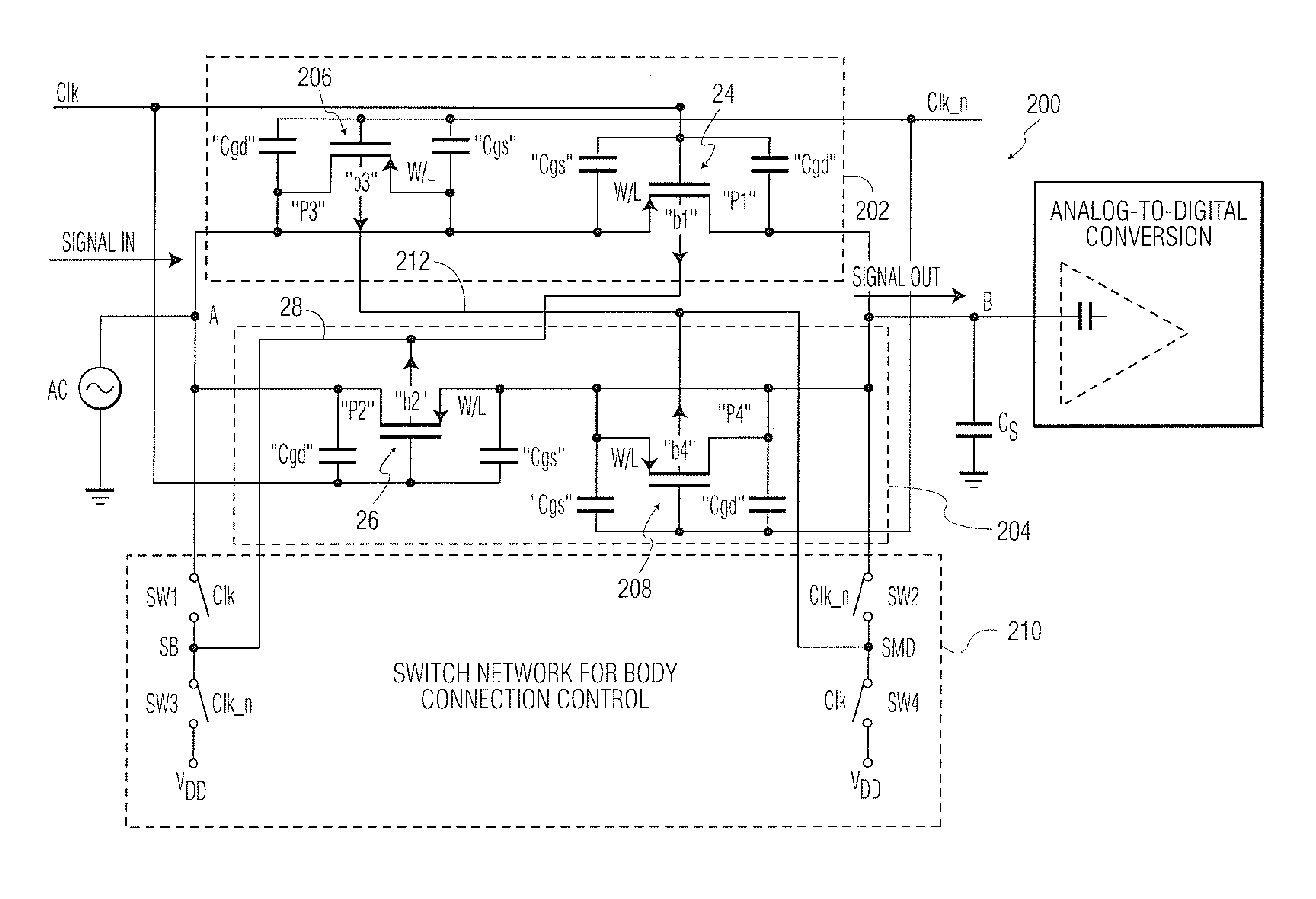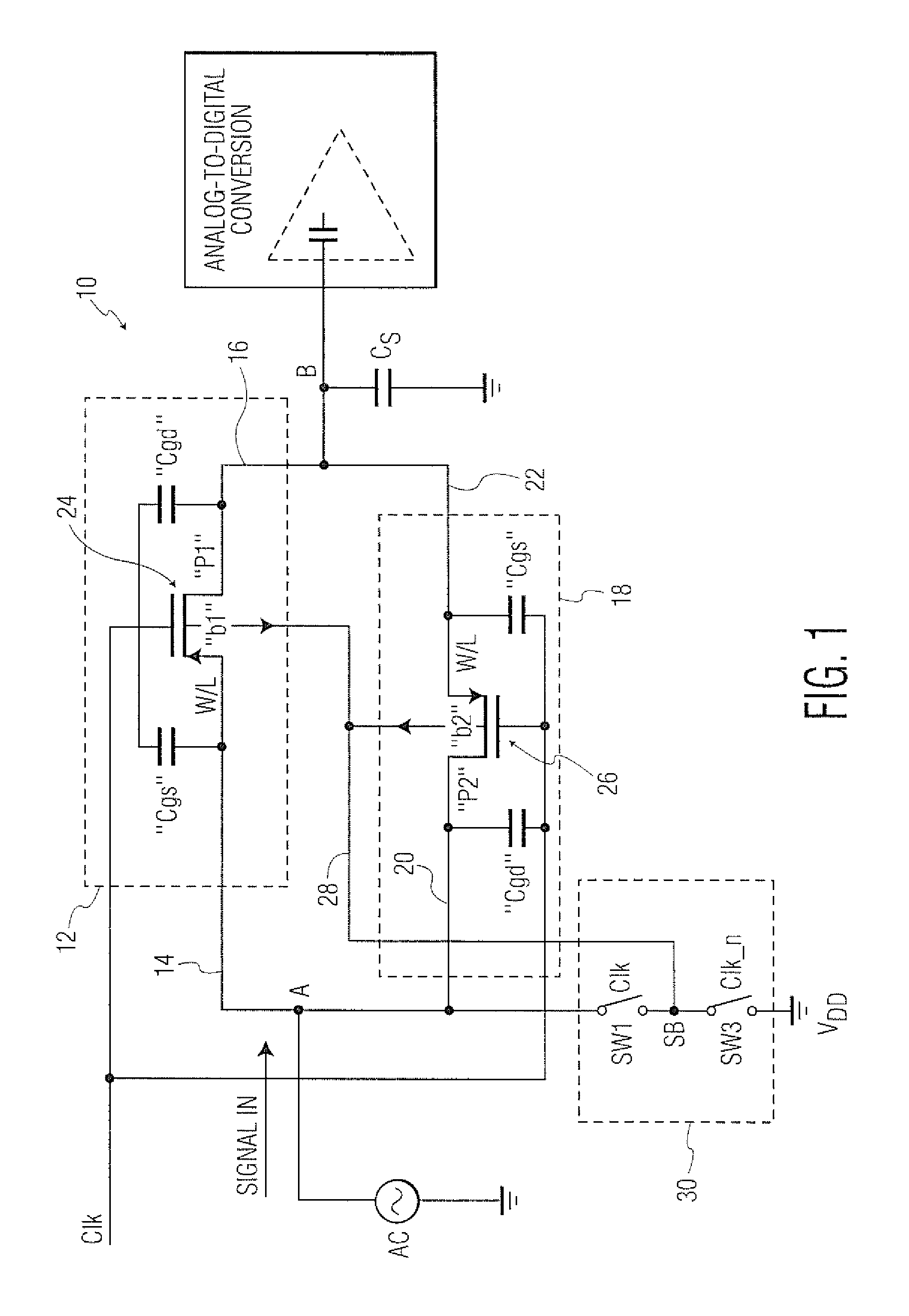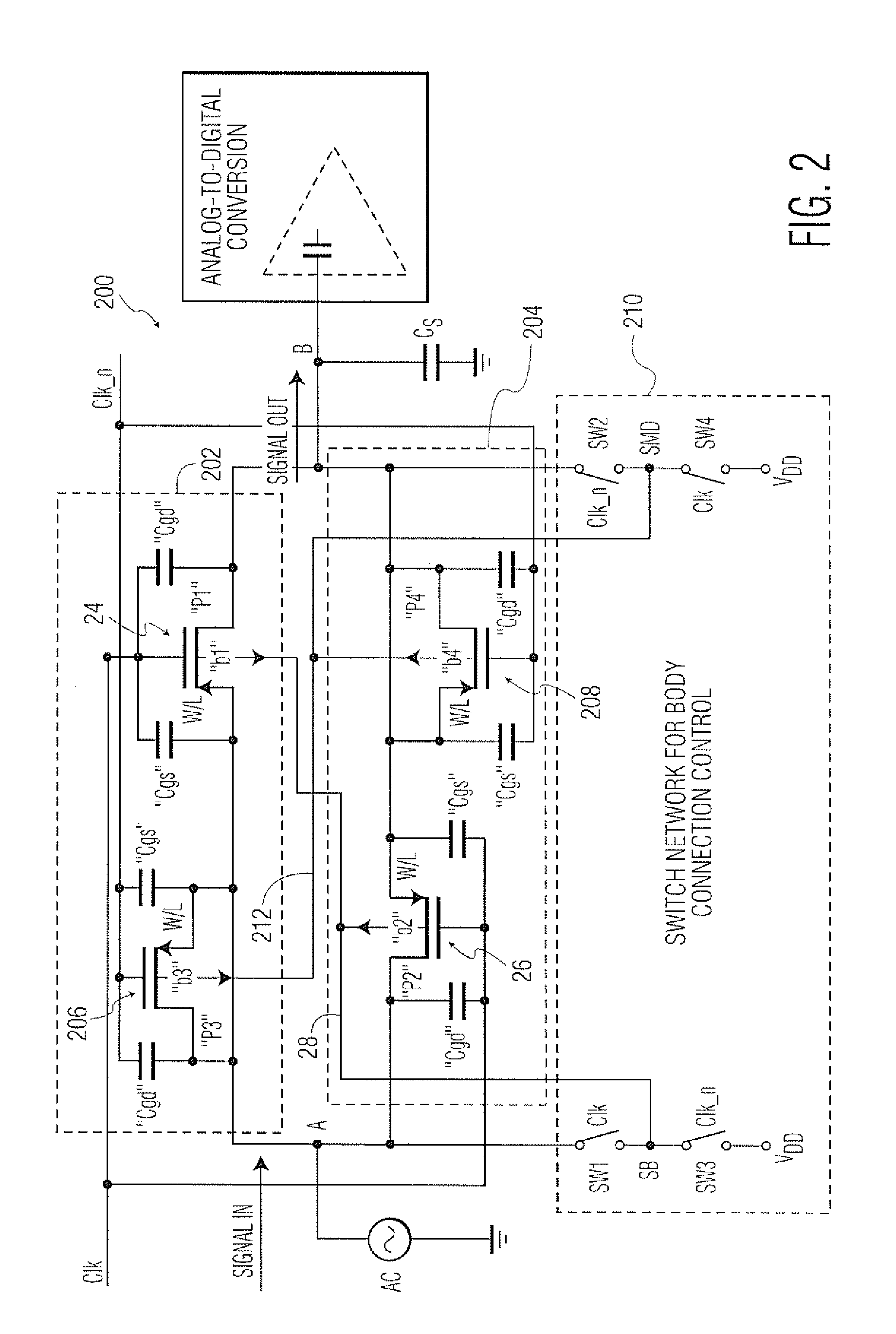Switch-body PMOS switch with switch-body dummies
a switch body and switch technology, applied in the field of switch body pmos switch, can solve the problems of imposing methods, reducing the efficiency of actual operating s/h devices, and affecting the efficiency of actual operation, so as to reduce the non-linearity error
- Summary
- Abstract
- Description
- Claims
- Application Information
AI Technical Summary
Benefits of technology
Problems solved by technology
Method used
Image
Examples
Embodiment Construction
Various examples having one or more exemplary embodiments are described in reference to specific example configurations and arrangements. The specific examples are only for illustrative purposes, selected to further assist a person of ordinary skill in the art of sample-and-hold circuits to form an understanding of the concepts sufficient for such a person, applying the knowledge and skills such person possesses, to practice the invention. Neither the scope of the embodiments and the range of implementations, however, are limited to these specific illustrative examples. On the contrary, as will be recognized by persons of ordinary skill in the sample-and-hold arts upon reading this description, other configurations, arrangements and implementations practicing one or more of the embodiments, and one or more various aspects of each, may be designed and constructed.
The figures are arranged to provide a clear depiction of the figure's illustrated example subject matter and, further, gra...
PUM
 Login to View More
Login to View More Abstract
Description
Claims
Application Information
 Login to View More
Login to View More - R&D
- Intellectual Property
- Life Sciences
- Materials
- Tech Scout
- Unparalleled Data Quality
- Higher Quality Content
- 60% Fewer Hallucinations
Browse by: Latest US Patents, China's latest patents, Technical Efficacy Thesaurus, Application Domain, Technology Topic, Popular Technical Reports.
© 2025 PatSnap. All rights reserved.Legal|Privacy policy|Modern Slavery Act Transparency Statement|Sitemap|About US| Contact US: help@patsnap.com



